Most people are aware that dogs are relatively intelligent when compared to other members of the animal kingdom. However, dog intelligence varies between breeds with some, such as the Cavalier King Charles Spaniel, being predisposed to genetic defects of the brain that impact overall intelligence.
Dogs are especially good at social cognition. They’re able to read and understand humans better than many other animals. Researchers can’t agree why. Some believe that it is evolutionary, as dog breeding has favored qualities that would make them good companions to humans, such as being able to understand us better. However, there are many cool things that dogs can do that people have no idea about. Let’s examine some of the things dogs can do that you might not know about.
It was hard to determine what belonged on this list. While many things that dogs can do are amazing, no doubt, they’re often also common knowledge. The human obsession with dogs has reached a point where there are very few developments in the world of dogs that don’t make headlines. So, we tried to choose things that were not quite common knowledge without choosing things that were flat-out uninteresting.
Once we had a selection of choices, we started researching them in-depth by looking at the studies in question performed and what those ultimate conclusions were, without the fanfare of a typical article. We looked at the methodology of each study and we also looked for studies that repeated the original premise to further cement the truth of what dogs are capable of. (For more interesting dog information, next read 32 Paw-some Facts You Probably Don’t Know About Dogs.)
Smell Cancer

While this information is still pretty new, even on the science scene, it’s something we hope to see studied in greater depth. A dog’s olfactory acuity is at least 10,000 times more sensitive than a human’s. However, being able to smell cancer is definitely a leap in ability that we don’t think you might have guessed!
A research team led by Professor Thomas Quinn from Lake Erie College of Osteopath Medicine in Erie, Pennsylvania worked with a small team of beagles to put their noses to the test. The team picked beagles specifically because they are scent hounds—dogs bred for the purpose of tracking and chasing small game using their noses. Beagles, in particular, have 225 million olfactory receptors compared to a human’s 5 million.
Smell Cancer

In the aforementioned study, the research team trained the beagles to “sniff out” non-small cell lung cancer in blood samples for eight weeks. However, one of the dogs showed very little interest in the task. Thus, it did not participate in the study. The dogs were trained to sit down when they could smell cancer or stay standing and move on when the sample was from a healthy person. After the training period, they had the beagles try to distinguish between cancerous and healthy blood samples in a trial.
The dogs were able to distinguish the cancerous blood samples with 97.5% specificity and 96.7% sensitivity. Quinn intends to see if it’s possible to use dogs to find the biomarkers of blood samples from people with non-small cell lung cancer. He also plans to repeat the study using breath samples instead of blood samples. The participants will breathe into a special mask and the dogs will assess those samples. The goal is to eventually create a cheap, over-the-counter breath test that will determine if a person has cancer.
Sense Pregnancy

Much like a dog can smell biomarkers for cancer, there are also scent-related biomarkers for pregnancy. Dogs dedicate more than 40× the brainpower to processing olfactory information than humans. They can distinguish between 30,000 and 100,000 different smells!
However, the AKC stated that whether dogs can truly smell the difference in scent when a person gets pregnant is mostly conjecture. There is no scientific evidence that shows whether dogs can actually distinguish the scent of a pregnant person from a non-pregnant one. However, Dr. Ann Hohenhaus, DVM, suggests that she “suspects dogs can smell something we cannot.” What that thing is, we don’t really know.
Sense Pregnancy

Based on current literature, it’s highly unlikely that your dog actually knows that you are pregnant or what being pregnant means for humans. However, they can detect small changes both in scent and in your behavior. Dogs can pick up all kinds of scents, such as insulin levels, menstrual cycles, and cancer. So, it’s not out of the realm of possibility for your dog to detect a small hormonal change when you become pregnant.
Some dog owners report that their dogs’ behavior towards them changed when they became pregnant—even before the person in question knew they were pregnant. Brook Oscarson, a parenting blog writer, writes “Within just a few weeks of my pregnancy, the dog’s demeanor changed. If we were playing sports with my siblings, and he sensed things were getting too intense, he’d bark and run over to check on me.” Another blogger reports that her dogs became so hyper-vigilant during her pregnancy that she was unable to walk them without assistance.
Smell Scents from Over 10 Miles Away

Dogs’ noses have more surface area than humans’. Additionally, dogs are better at moving air through their noses than humans are. They have somewhere between 125 and 300 million scent receptors and the part of their brain that analyzes those scents is 40× bigger than ours. All this is to say that dogs have some truly amazing abilities with those schnozzes.
While smelling cancer and pregnancy is certainly amazing, it doesn’t capture just how sensitive a dog’s nose is. Bomb-sniffing dogs can smell as little as one picogram—a trillionth of a gram—of TNT in a sample. A typical cinnamon roll has one gram of cinnamon. That’s a trillion times more than how much TNT needs to be present for a bomb-sniffing dog to flag something.
Smell Scents from Over 10 Miles Away

As humans, we often train dogs to use their superior senses to aid us, such as the aforementioned bomb-sniffing dogs. However, with a nose that can smell a trillionth of a gram of TNT, you might wonder how far that goes for a typical scent.
Under perfect conditions, dogs have been verified to detect scents that are up to 20 kilometers—around 12 miles—away. Human noses are by no means primitive. We can distinguish about 1 trillion smells. However, a lot of that information goes through our subconscious brain and we never actually think about it.
Your dog probably doesn’t think that hard about smells that are 12 miles away. However, it’s still nice to think that your dog might know when you’re 10 miles from home. It’s comforting in a way.
Understand Human Speech
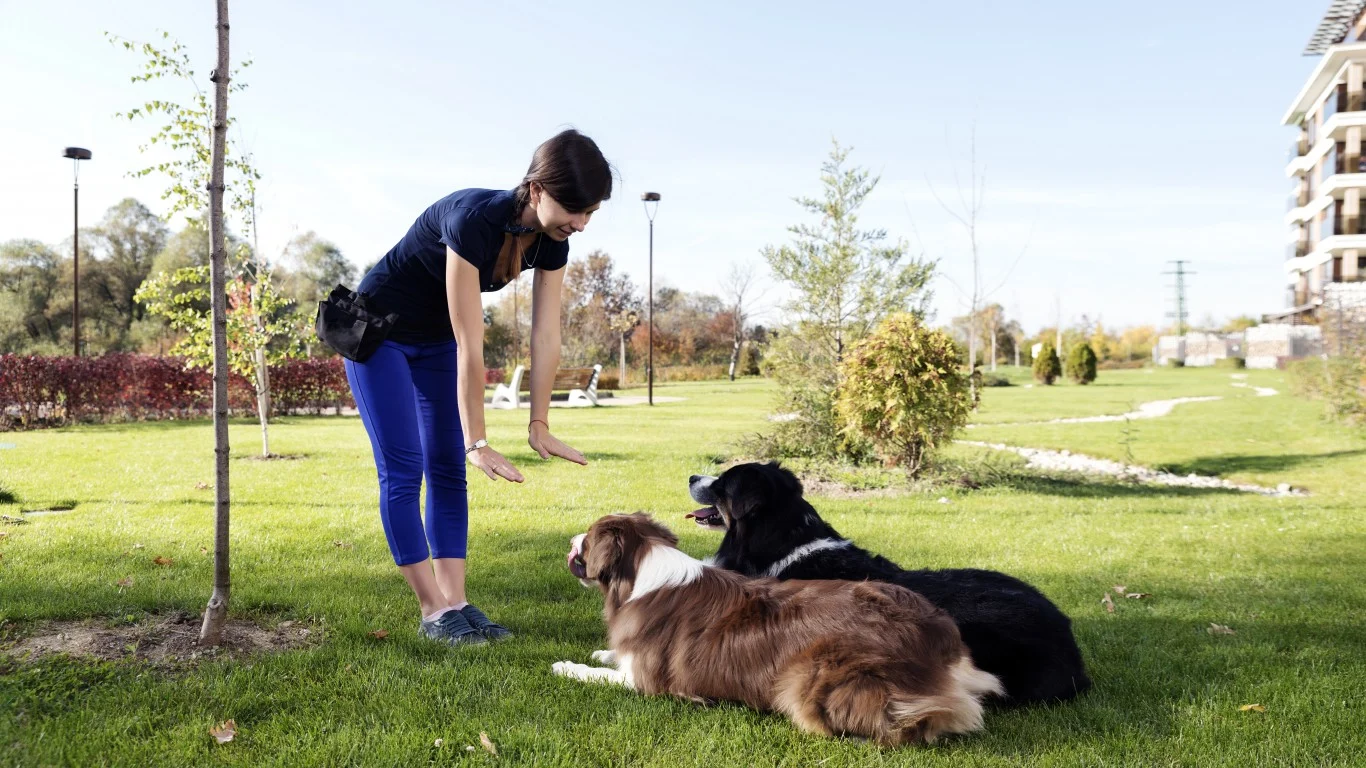
Many people talk to their dogs as if their dogs don’t understand them. To some extent that is true. The linguistic capabilities of dogs are significantly weaker than humans. However, science has shown that dogs understand significantly more speech than we might think they do.
They also understand it on a deeper level than we first thought. Many people assume their dogs only understand words by association with treats. Thus, they think their dogs understand words as a mere association with a command for the purpose of receiving treats. However, your dog may have picked up more human language than you think.
Understand Human Speech

The average dog doesn’t distinguish the phonetic details of human speech. So, if you’ve taught your dog to “sit”, you might get the same ultimate response if you say “sid” instead. Your dog doesn’t phonetically distinguish between the “t” and the “d” sound. They sound similar. So, your dog hears them as the same unless you teach it otherwise.
However, a research team in Hungary observed dogs’ cognitive response to three types of words: words they knew, words that sounded like the words they knew, and nonsense words that did not sound like words they knew. The results were definitely interesting. When distinguishing instructions they knew from words that did not mimic the lexicon they were familiar with, the dogs’ cognitive responses were actually on par with human responses. However, they had the same cognitive response to words that sounded like words they knew as when they heard a word that they knew.
Identify Feelings

Many people don’t think their dogs have feelings or understand how people feel. However, that’s pretty patently false. According to Psychology Today, most dog owners know that their dogs will stay near when they sense something is wrong and even provide emotional comfort in times of need.
The emergence of emotional support animals is all you need to know about the emotional intelligence of dogs, and other animals, for that matter. However, we don’t really know exactly how it is that dogs understand our feelings. On some level, it may be a scent-based judgment from minute hormonal changes that accompany our feelings.
Dogs use many different stimuli to determine how they should react to different things, like feelings. We mentioned before that dogs have excellent social cognition. That means they’re able to identify and react to feelings in a way that is comprehensible and reasonable. The science behind it is a mixed bag, not in efficacy, but in that, it’s actually very complex reasoning that dogs use to determine what they identify as your current state of mind.
Identify Feelings
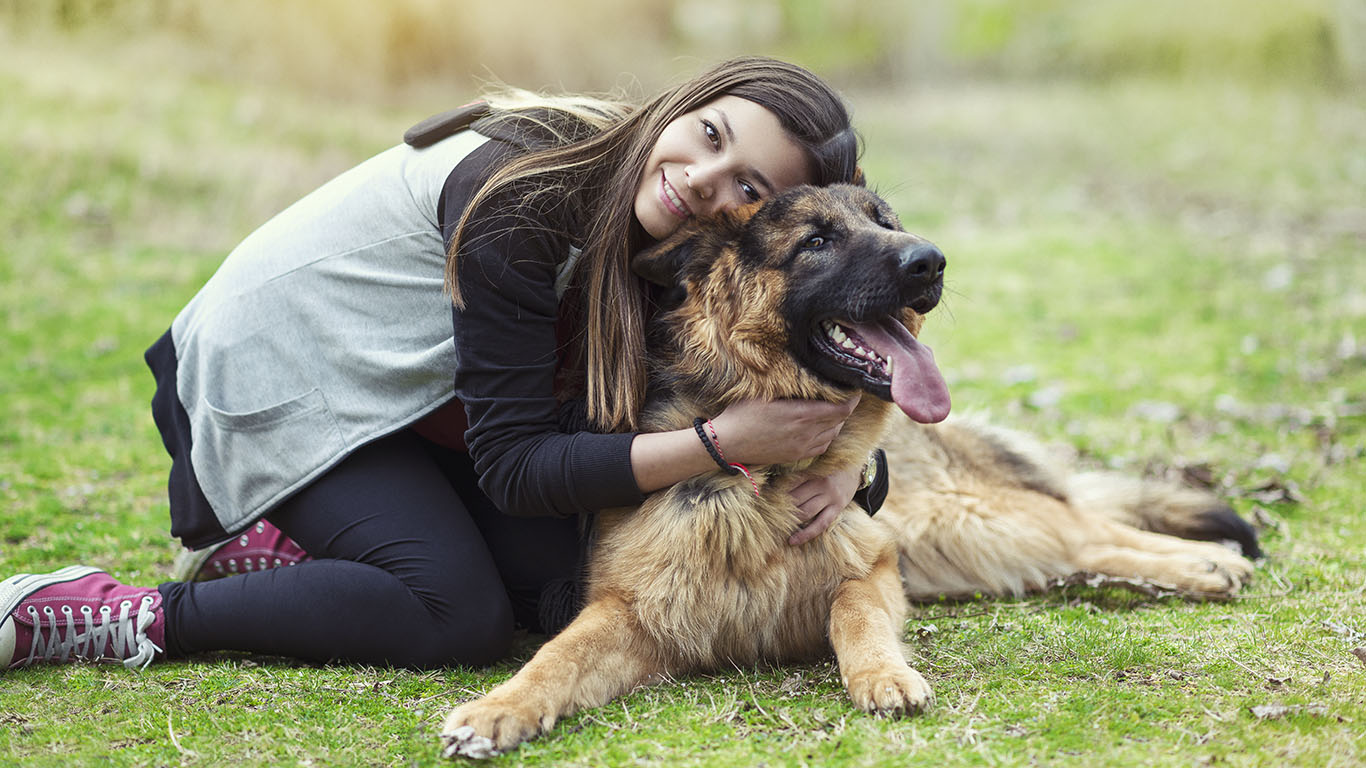
We know that dogs can read and learn to understand human facial expressions. They have also been shown to be sensitive to body language in terms of posture and non-speech vocal communication, writes Psychology Today. However, the burning question from this article is “Can they smell emotions?”
The University of Naples did studies on whether or not dogs could identify emotional states through body odors. They used “odor donors” and dispersed the scents through a room while the dogs were present with their owner and stranger. When dogs were exposed to “happy odors”, they were more curious about the stranger and at ease. However, when exposed to “fearful odors”, they presented with more signs of stress and sought reassurance from their owners.
Detect UV Light and Thermal Radiation

When we think of what feats dogs are best known for, sight isn’t typically one of the top answers. While sighthounds do exist and their vision is excellent, most people think of a dog’s nose when they think of its best sense. However, a dog’s eyes have more capabilities than a human’s, including a special lens that allows them to see ultraviolet light.
Royal Society scientists analyzed the eyeballs of several species of mammals, including dogs, and found lenses that allow UV light through in dogs’ eyes. This lens may explain why dogs have a habit of staring at power lines. While humans see power lines as ropes in the sky, dogs see the UV light bursting forth from within them. We probably don’t have to tell you that it sounds like an interesting thing to look at.
Detect UV Light and Thermal Radiation
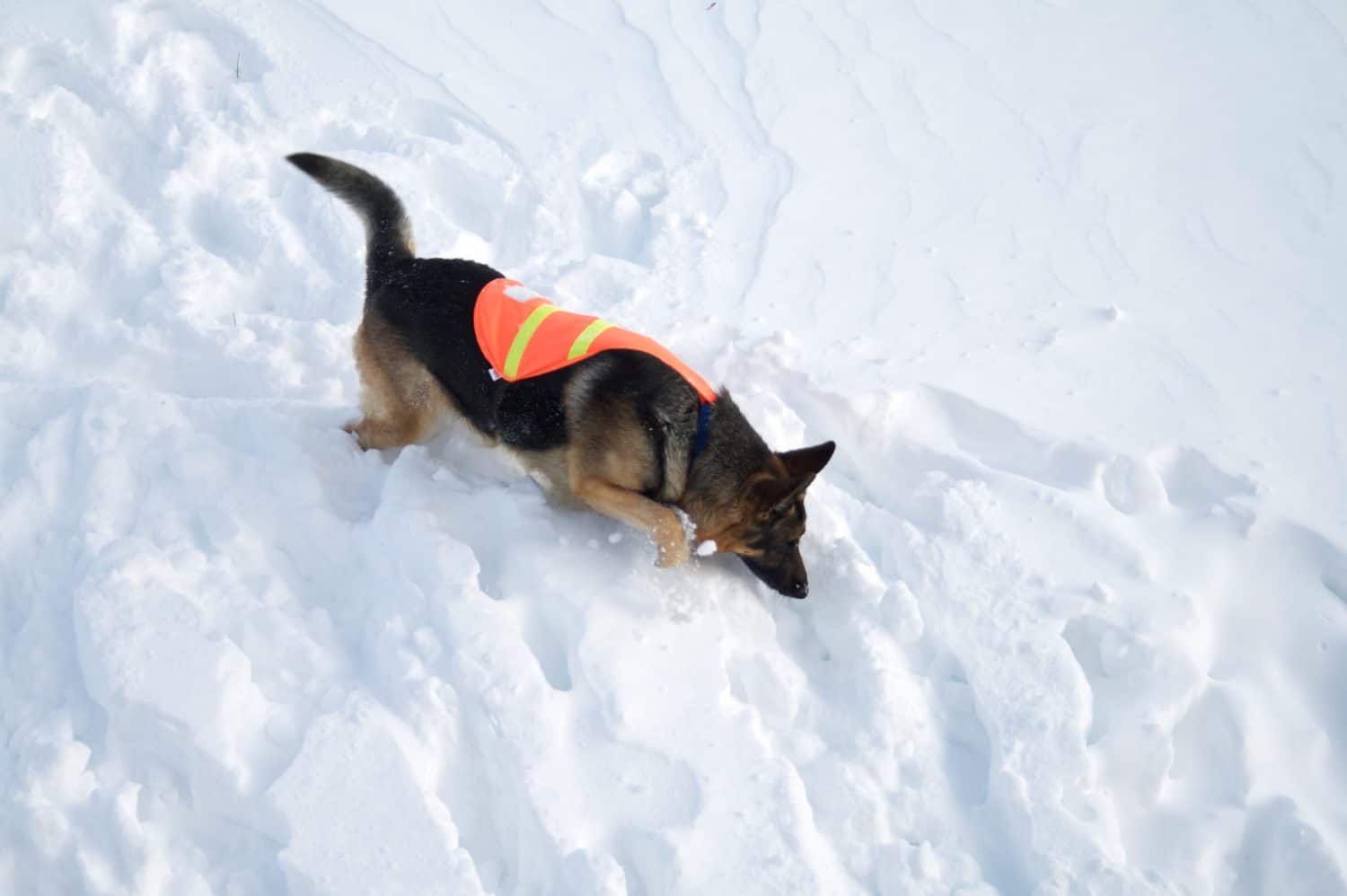
UV light isn’t the only spectrum of information that dogs can detect that’s invisible to humans. They can also sense thermal radiation with an infrared sensor in their nose. This sensor allows them to detect radiation coming from warm bodies, even weak thermal radiation.
Brain scans done on dogs showed a substantial increase in brain activity when dogs were shown physical objects that were warmer than their surroundings. The ability to sense thermal radiation might be one of the reasons dogs are so good at search and rescue jobs. Their noses can’t just smell the presence of humans from 12 miles away, they can also detect weak thermal signals, like the ones put out by humans trapped in wreckage or snow.
Sense the Earth’s Magnetic Field

If being able to smell cancer and sense thermal radiation wasn’t cool enough, dogs can also sense the Earth’s magnetic field. We have several different studies that seem to suggest that dogs don’t just sense the Earth’s magnetic field, but that they also use that information when making decisions.
For instance, a lot of people know that dogs are really good at finding their way home when they’re lost. After all, the part of the “Lassie” series where the titular dog finds her way home from all sorts of situations was based on a real experience by dog owners. However, science suggests that they use the Earth’s magnetic field as a compass when they do this navigation. It’s not so hard to figure out where you are when you can sense the magnetic field of the planet. Dogs have also been observed using minute changes in the Earth’s magnetic field to find shortcuts in terrain that humans wouldn’t be able to see.
Sense the Earth’s Magnetic Field
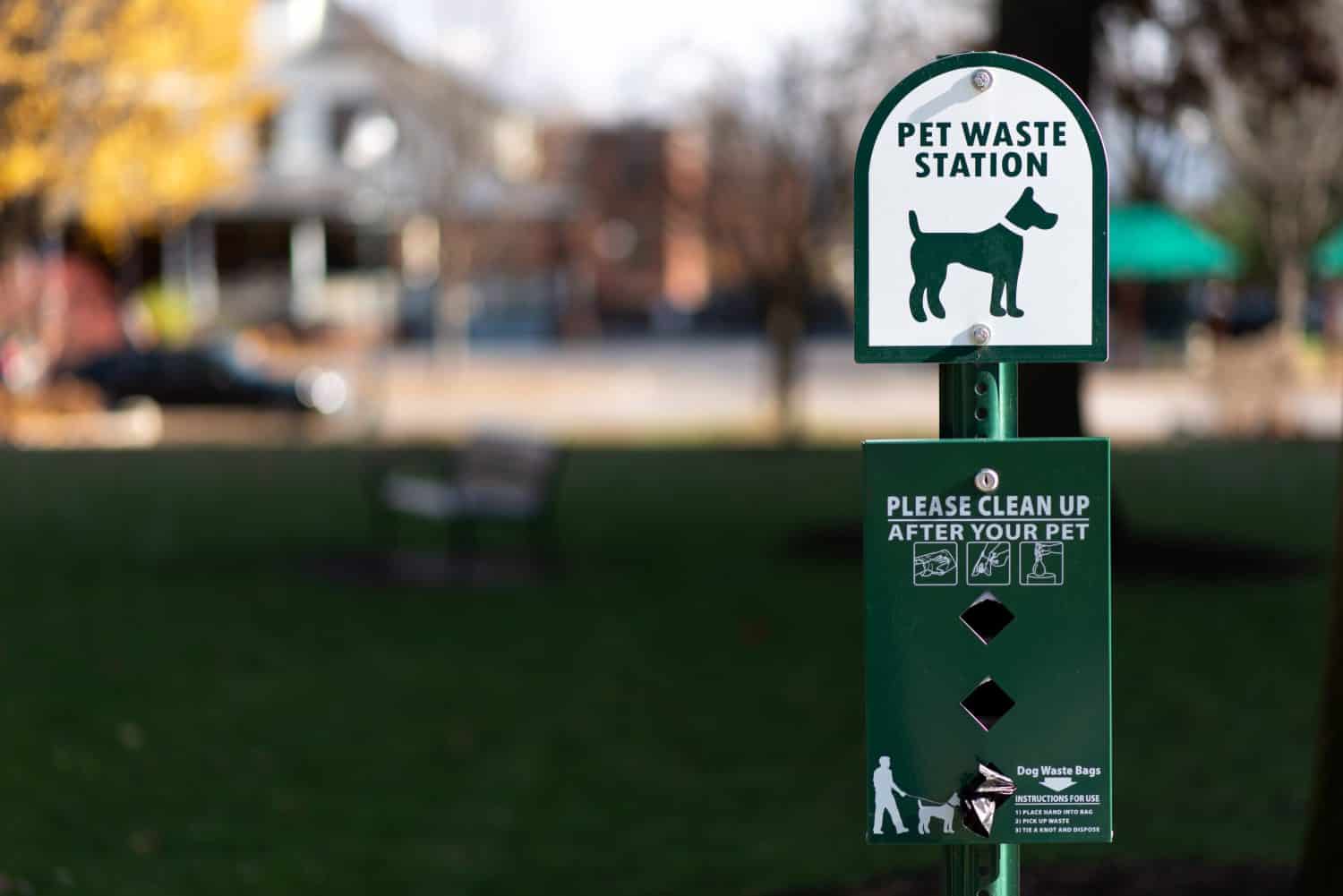
Finally, a study reported by PBS suggests that dogs often do the little circle dance before they poop to orient themselves along the North-South axis of the Earth’s magnetic field.
The circle dance has a few other cool evolutionary traits to it, but they seem to choose their final position based on the Earth’s magnetic field. Typically, dogs prefer to poop facing North. Pooping isn’t the only thing they use their magnetic GPS for. They’ll also realign themselves with the magnetic field before peeing or sleeping in some cases, too.
See in the Dark

Typically when we think of animals that can see in the dark, cats come to mind first. However, dogs can see in the dark and they use the same evolutionary mechanism as cats. Firstly, dogs have a higher number of light-sensitive rods in their eyes compared to humans.
These rods make their eyes more sensitive to smaller amounts of light. So, what might be “dark” to you, might still be navigable for your dog. However, it’s not just the rods that make dogs able to see in the dark. The real secret lies in the tapetum lucidum, an evolutionary feature shared between cats, dogs, and many other creatures, particularly nocturnal ones.
See in the Dark

The name “tapetum lucidum” is Latin for “bright tapestry.” It is a layer of reflective cells behind the retina that act as a mirror within the eye. Light enters the eye and goes through the retina to the tapetum lucidum. The reflective cells then reflect the light back through the retina, giving the eye a second chance to register the light. It magnifies and intensifies your dog’s visual sensitivity under low-light conditions and increases its ability to detect objects in the dark.
It’s also the reason why your dog turns into some kind of demon from Hell when you shine a light on it. You can’t just reflect light without creating a reflection. So, when you shine a light at your dog, the light reflects off their tapetum lucidum and creates a light inside their eye that makes them look like they’ve been possessed by the devil.
Detect Natural Disasters Before They Happen

As far back as 373 B.C.E., people have reported that animals behave strangely just before natural disasters, such as earthquakes. Dogs have been reported presenting with unusual behavior as far back as a few days before an earthquake hits. Some people think it might be a retroactive observation. So, the earthquake hits, and suddenly you realize your dog was acting a little off, and then you associate those two even though they aren’t actually connected.
However, some scientists are interested in knowing whether animals can truly predict natural disasters. A study of an earthquake in Siberia showed that a significant number of dogs in the area presented with anxious behaviors, such as barking for no reason, howling, whining, and running around in the minutes or hours just before the earthquake hit. Another study looked at 729 reports of abnormal animal behavior before earthquakes over several species, including dogs, cats, birds, cows, elephants, toads, and fish.
Detect Natural Disasters Before They Happen

One study attempted to evaluate potential short-term earthquake forecasting by monitoring farm animals in the area. The animals repeatedly showed high levels of activity just before an earthquake and reacted sooner if they were closer to the epicenter. While the data is by no means conclusive at this time, scientists are continuing to study animal behavior and how it relates to natural disasters.
They hope that if we can draw a meaningful conclusion between animal behavior and natural disasters, we can use crowd-sourced information about local animal behavior to predict natural disasters and respond to them more appropriately. In the future, we may have an application we can check to see if local animals are acting strangely so we can prepare for potential disasters.
Run Fast and Long Distances

Dogs are pretty fast. Most people can’t outrun their dogs. However, how fast and how far a dog can run is determined by their breed. Some dogs, like sled-pulling dogs, were specifically bred to be able to run fast, far, and pull a lot of weight while they do it. The secret to sled-pulling dogs’ long-distance running is that they can turn on a metabolic switch that causes their body to start extracting energy directly from fats in their bloodstreams.
Scientists don’t know how that metabolic switch works, just that it exists and that Huskies use it all the time to keep their muscles from declining when they run long distances. Using this metabolic switch, Huskies have been known to run upwards of 100 miles a day, with some able to cover 1,100 miles in just 9 days of running.
Run Fast and Long Distances
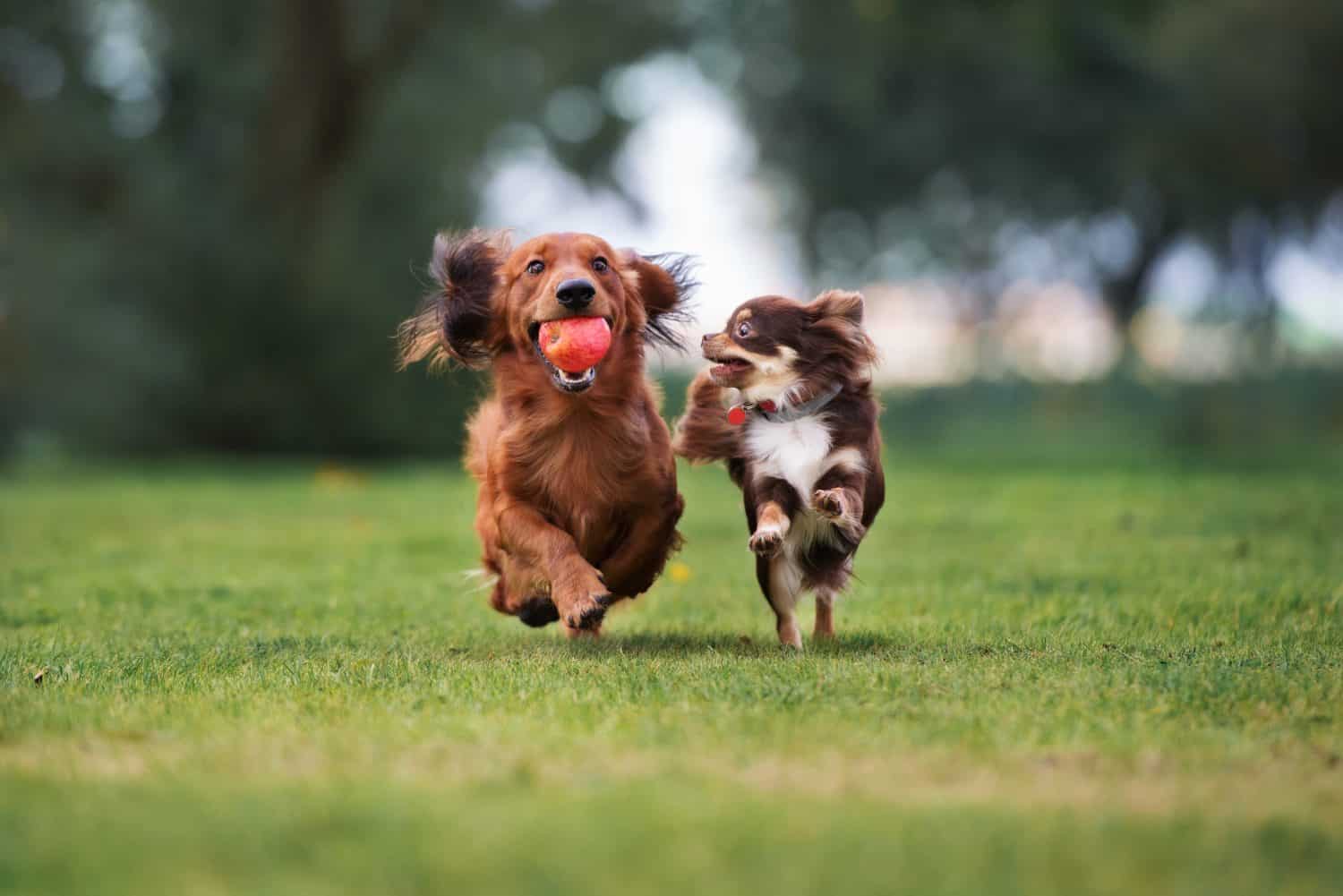
Dogs don’t just run far, either. Many of them run fast, too! Greyhounds are the fastest dogs, able to run 45 miles per hour. The fastest dogs range from the poodle at 30 miles an hour to the greyhound. If you were wondering what the slowest dog is, it’s the basset hound. Not super surprising, a long body with short legs isn’t exactly a prime candidate for speed. (Need more reasons to adopt a dog? Check out the Top Reasons Rescue Dogs Make the Best Pets.)